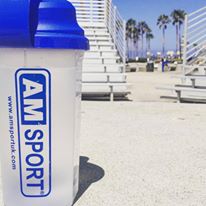Water Works
by Becky Pykett
Drinking plenty of water is an important part of maintaining a healthy weight and a nutritious diet. Water plays an essential role in helping your body process nutrients, maintain normal circulation and keep the proper balance of fluids.
Replace What You Lose
After each 30-minute workout, drink two 250ml glasses of water to replenish your fluids. If you find you become thirsty while working out, consider using a sports bottle to help you stay hydrated while you exercise.
Because of their calorie content, soft drinks and fruit juices are not good choices for replacing lost fluids if you are trying to lose weight or manage your weight. You might try adding just a splash of fruit juice or a slice of lemon or lime to a glass of water if you don’t like the taste of plain water.
How Much Water is Enough?
As a general guideline, try to drink two litres of water a day. If you exercise, you will probably need to drink more to replenish the water lost through sweating.
You can usually trust your sense of thirst to let you know when you need to drink. Your sense of thirst, combined with simply paying attention to how many glasses of water you’ve had in a day, can help you to keep your body hydrated.
When Water Isn’t Enough
The next time you’re thirsty, it could be smart to think before you drink. While “you are what you eat,” the phrase is more accurately “you are what you drink.” Our bodies are about 60 percent water, and while watery foods can help meet our needs, most of our daily water needs are met from the fluids we drink. Aside from plain water, consumers are faced with a dizzying array of juices, juice drinks, vitamin fortified waters, sports drinks, energy drinks and teas–making it difficult to choose the best beverage to help meet fluid needs.
For the average person who exercises moderately, plain water is a perfectly good choice. But many people prefer drinks with a little flavour, and tastier fluids may encourage consumption. And as exercise duration and intensity increase, it’s important to not only replace fluid losses, but to replace body salts– such as sodium and potassium–that are lost through sweating.
Look Before You Drink
When evaluating beverages, a good place to start is by reading the nutrition facts label. For instance, fizzy or fruit drinks are often high in calories and sugar, and low on nutrients. Not only can these empty calories pile on the pounds, the high-sugar concentration in fizzy drinks and fruit drinks can actually slow down the rate at which the body absorbs fluid. If you see high-fructose corn syrup at the top of the ingredient list, you may want to choose a healthier option. Sugars other than fructose, in lower concentrations, are much better absorbed.
Some energy drinks have a combination of caffeine and sugar, designed to give you a quick spike in energy. But if you aren’t used to consuming caffeinated drinks, these could make you jittery or upset your stomach.
So what should you look for?
It’s a good idea to check labels for electrolytes, such as sodium and potassium, which are salts that your body loses when you perspire. In addition to replacing losses, electrolytes can also add some flavour, which will encourage you to drink more. Also, look for drinks with less than 100 calories per 250 ml serving. Higher calories means a higher sugar concentration.
While too much sugar can be a problem, a little bit of carbohydrate in beverages can help to maintain blood sugar while you are exercising. Also, a mixture of several forms of carbohydrate in the drink helps to get carbohydrate into working muscle better than just one carbohydrate source.
Staying Hydrated
You may become dehydrated before you feel thirsty. This is one reason that athletes learn to drink on schedule. Two glasses of 250ml of fluid a couple of hours before you start exercising should be followed with another glass or so 10 to 20 minutes before you start. An additional 30-50ml of fluid every 15 minutes or so when you are working out can help prevent excessive fluid losses. One way to monitor your hydration is to note the colour of your urine. “People who are optimally hydrated should urinate every one to two hours,” says Luigi Gratton, at the University of California at Los Angeles (UCLA)*. “And your urine should be pale yellow or clear,” says Gratton. “Darker colour usually means more concentrated urine, an indication that you should increase your fluid intake.”
Watch for other signs and symptoms of dehydration during exercise, such as muscle cramping, or feeling light-headed or faint. Even if you’re only a weekend exerciser, adequate fluids are important for a healthy, well-functioning body. If you think you drink less than you should, a flavourful drink designed to help you hydrate might be just the thing to help meet your fluid needs.
Written by Becky Pykett
– Coach of the 8-Week RCFR Paleo Nutrition Course

